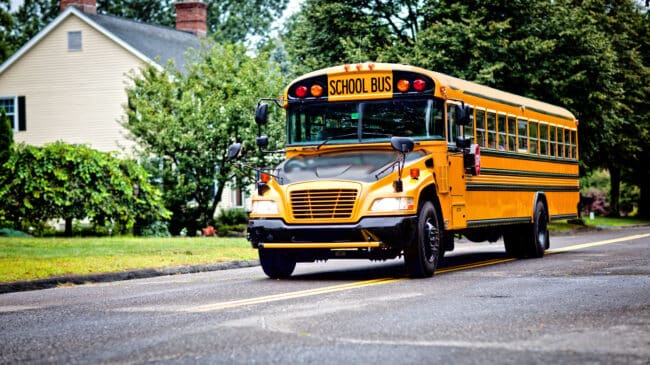Dubbed the year of universal school choice due to seven states signing universal or near-universal school choice proposals into law, 2023 also witnessed important improvements to K-12 open enrollment laws in six states–Arkansas, Idaho, Montana, Nebraska, North Dakota, and West Virginia.
Open enrollment lets students transfer to public schools other than their residentially assigned schools, so long as space is available. With 85 percent of K-12 students still attending public schools, this policy is critical to school choice.
Here’s how Reason Foundation ranks these states’ open enrollment reforms and policies:
1. Idaho
Idaho’s new open enrollment law was the best one signed into law during 2023. Now, all the state’s students can access any public school with available seats through open enrollment. Last year, Idaho scored just one out of five on Reason’s open enrollment best practices. After this year’s reforms, the state scores four out of five, making its available enrollment policies on par with national leaders, such as Florida or Arizona.
Significantly, Idaho explicitly prohibited public school districts from discriminating against transfer applicants based on their residential address, a groundbreaking requirement. State policymakers also improved various transparency provisions to ensure the open enrollment process is fair to students. In fact, if Idaho were to publish the reasons school districts reject transfer applicants in their annual reports, like Wisconsin, the state would have the best open enrollment policy in the nation.
2. West Virginia
Like Idaho, every West Virginia public school with open seats must now make them available to transfer students. Last year, West Virginia scored just 1/5 on Reason’s best open enrollment practices. It now scores 3/5 after making all school districts with extra seats participate in cross- and within-district open enrollment.
However, West Virginia’s new open enrollment law doesn’t provide the transparency parents and students deserve. While the State Department of Education assembles an impressive report on open enrollment annually, it doesn’t have to be made public. Similarly, public school districts don’t have to post their open enrollment policies and procedures on their websites. If state policymakers make these tweaks, West Virginia would further improve and have one of the nation’s best, if not the best, open enrollment laws.
3. Montana
Last year, Montana scored a dismal 0/5 on Reason’s best practices for open enrollment policies. After this year’s progress, the state scores 2/5. Montana’s open enrollment law lets students transfer across school district boundaries to attend other public schools that are a better fit and have available capacity.
Montana’s policymakers also deserve credit for clearly defining capacity, which is often a weakness in states’ laws. Yet, state policymakers still need to improve open enrollment transparency, such as requiring school districts to post their available capacity by grade level on their websites.
Montana’s 2023 reforms stop public schools from charging transfer students tuition to attend public schools. Public schools, especially in affluent areas, often use tuition charges to essentially block low- and middle-income students from transferring from other areas.
Going forward, Montana should also adopt within-district open enrollment, letting students transfer to schools outside their residentially assigned public school but inside their assigned school district.
4. North Dakota
North Dakota adopted robust cross-district open enrollment this year, improving its score on Reason’s best open enrollment practices from 0/5 to 2/5. The new law also makes public schools free to all students, stopping school districts from charging transfer students the cost of tuition. These are important steps in the right direction, but North Dakota can do more.
Specifically, state policymakers should guarantee that students can transfer to schools with open seats outside their catchment areas but inside their assigned public school districts. North Dakota could make its open enrollment laws far more transparent by adopting provisions requiring school districts to post all pertinent transfer and enrollment information on their websites. Lawmakers should also require the North Dakota Department of Public Instruction to collect and publish important open enrollment data. Wisconsin provides a good role model for this policy.
5. Arkansas
Arkansas eliminated the artificial cap school districts could impose to limit the number of transfer students using open enrollment. With this reform, Arkansas improves to 2/5 on Reason’s scoresheet for open enrollment best practices instead of 1/5.
Next year, state policymakers should let all public school students use within-district open enrollment, not just those assigned to failing schools. Arkansas should also adopt better transparency provisions, looking to states like Wisconsin and Florida as examples, so its open enrollment process is open and fair to all students.
6. Nebraska
Nebraska made its open enrollment policy more transparent by making school districts publicly post their available capacity by grade level so parents could see where seats are available. Nebraska already had a robust cross-district open enrollment policy and made public schools free to all transfer students by prohibiting transfer tuition at public schools. The state now scores 3/5 on Reason’s open enrollment best practices scoresheet.
However, state policymakers can still make their open enrollment policies better. First, Nebraska should adopt a robust within-district open enrollment policy and publish annual reports, like Wisconsin’s, that include crucial open enrollment data so policymakers can refine the law in the future.
Despite this year’s improvements, no state scored 5/5 on Reason Foundation’s open enrollment best practices scoresheet in 2023. Only six states score 4 ⁄ 5, and 42 states still don’t have policies allowing public school students to transfer cross-district and within-district.
There were a lot of critical school choice improvements in 2023, but most states still have a lot of work to do. Policymakers should use 2024 to give parents more flexibility and options to select the best public schools for their children.

